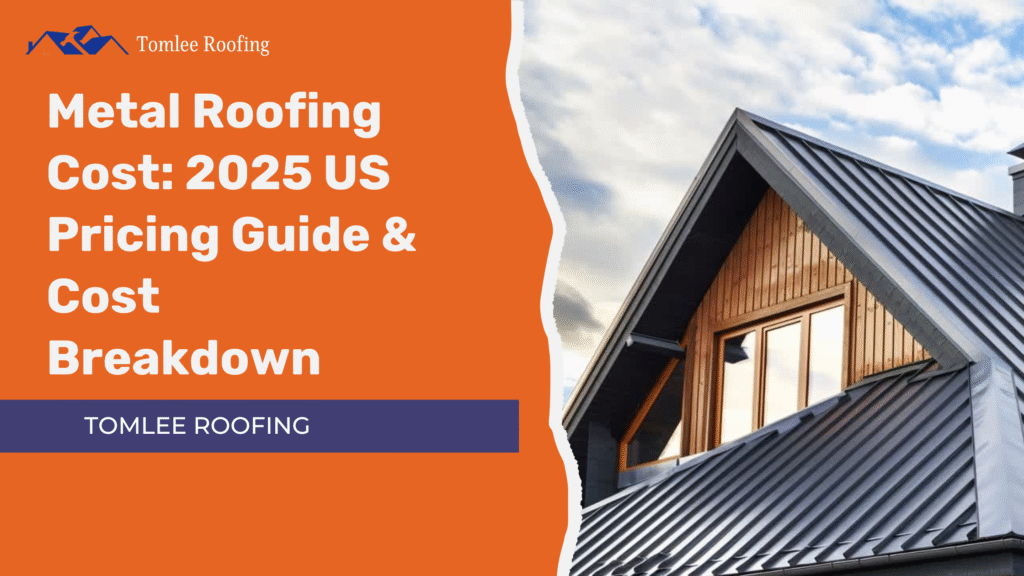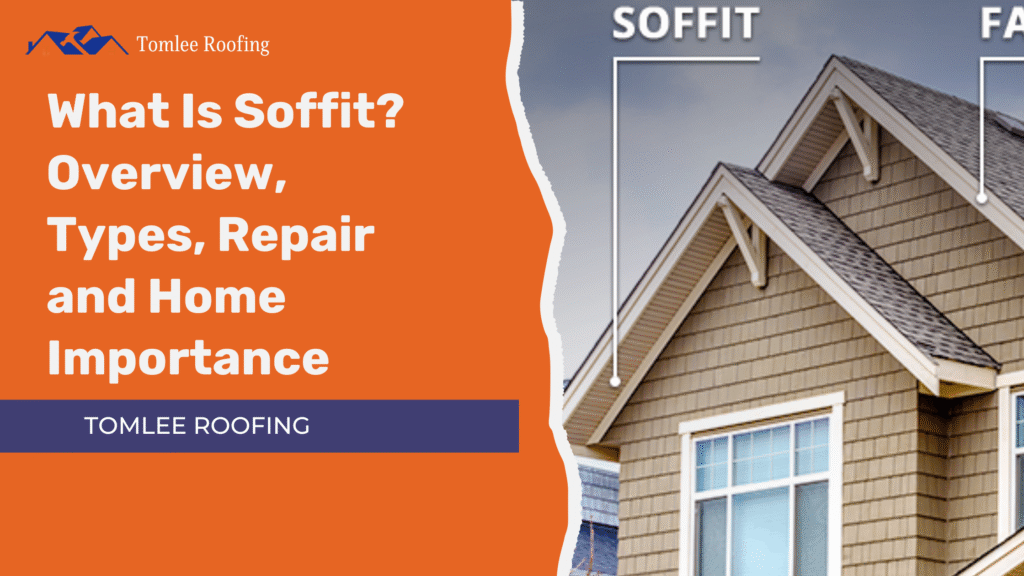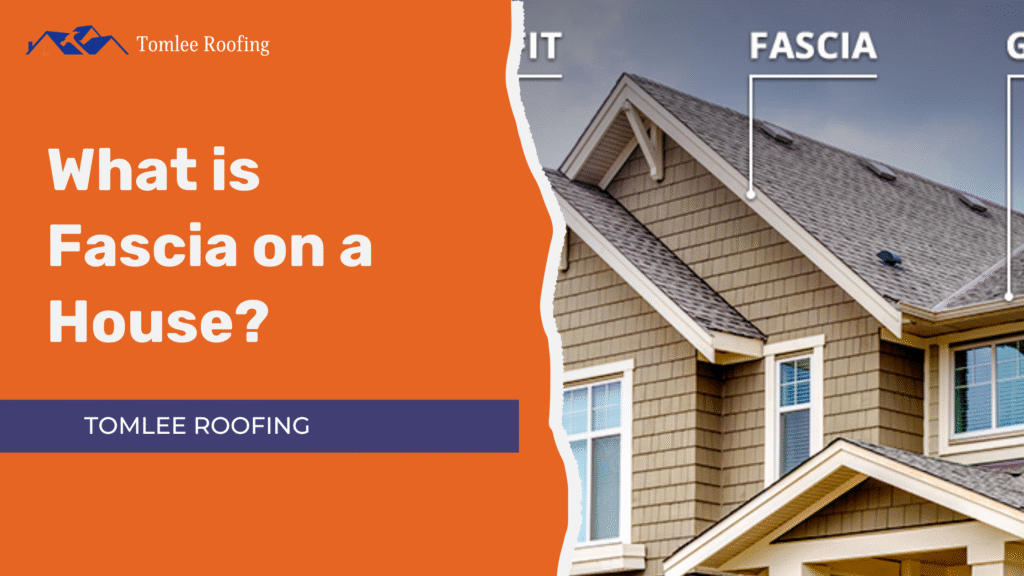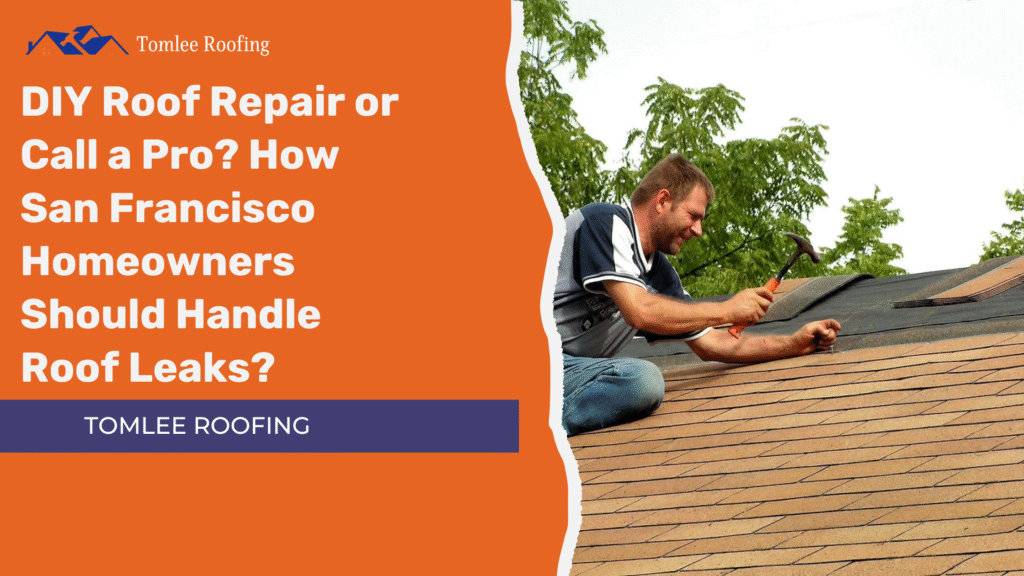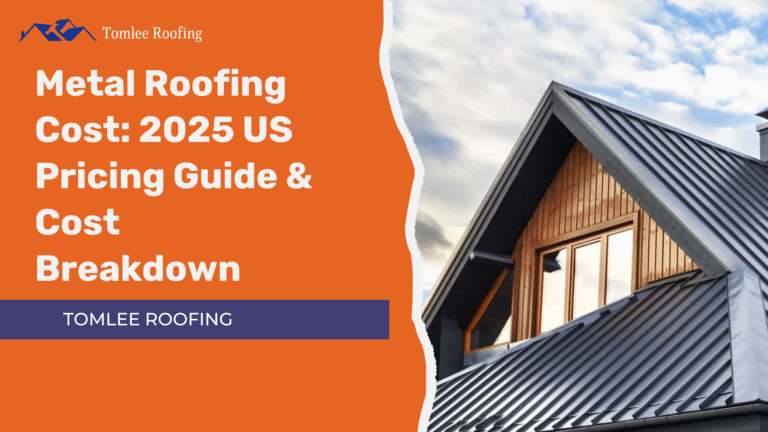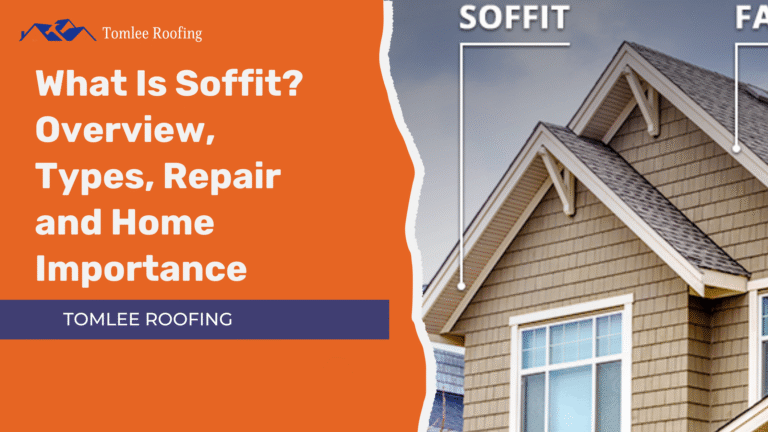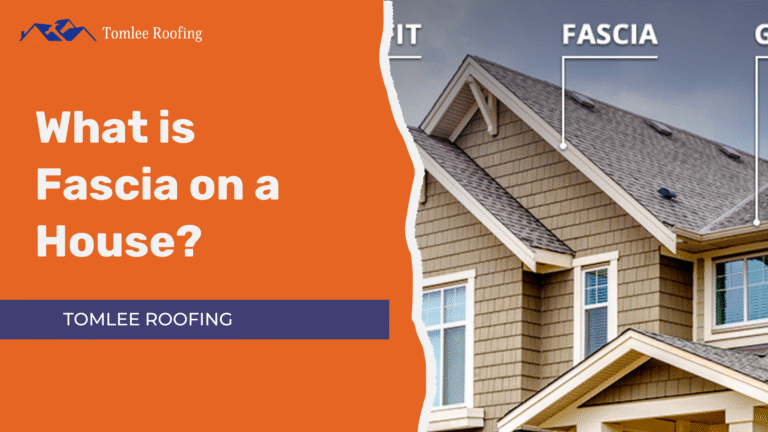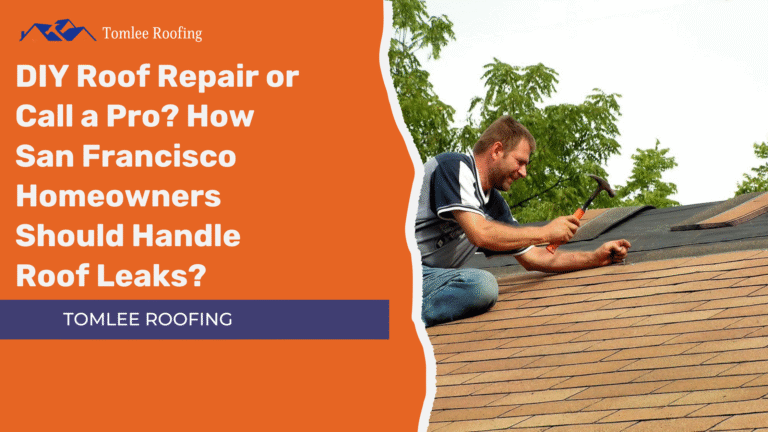Complete Roof Replacement Guide
Most roofs last around 20–25 years, but their lifespan varies with material and care.
Watch for warning signs like leaks, missing shingles, or sagging areas.
Asphalt roofs age faster than durable options like metal, tile, or slate.
Climate, ventilation, and regular maintenance play a big role in roof health.
A timely walkthrough into a complete roof replacement guide can save you from major repairs and costly damage.
Wondering if it’s time for a roof replacement?
Learn how long roofs last, signs of damage, and when repairs aren’t enough.
Discover expert tips to know exactly when to replace your roof and protect your home.
On average, most roofs need replacement about every 20 to 25 years. However, the actual lifespan depends heavily on the roofing material, weather conditions and how well it’s maintained over time.
Even if your roof hasn’t reached the end of its expected life, visible damage or leaks might mean it’s time for repairs, or even a full replacement.
In this roof replacement guide below, we’ll walk you through when and why you might need a new roof.
Don’t Wait for the Leak, Find Out If Your Roof Is at Risk Today.
A small drip could lead to thousands in damage. Schedule a professional roof inspection now and avoid the stress of emergency repairs later.
Helping Homeowners Understand When to Replace Their Roof — What We've Seen Firsthand
If you’ve ever looked up at your ceiling after heavy rain and noticed a stain or a drip, this blog is for you.
We’ve worked with countless homeowners who asked the same question you might be asking now:
“How long until I have to replace my roof?”
We’re not here to pressure you into a sale, just to share what we’ve learned from real experiences, real roofs, and real people who waited too long.
Our goal?
To help you avoid the stress, the mess, and the unexpected bills by giving you honest insights and practical tips.
Why Roofs Don’t Last Forever — And That’s Okay
Let’s make this simple. Roofs aren’t forever. Like shoes, tires, or your phone’s battery, they wear out over time. Here’s how long they typically last:
- Asphalt shingles: 15 to 30 years
- Metal roofs: 40 to 70 years
- Wood shakes: 20 to 40 years
- Clay tiles/slate: 50+ years
But these are just estimates. Weather, climate, trees nearby, and maintenance make a big difference.
In my case?
Asphalt shingles, 21 years old, lots of heat and rain. It hit the end of the road.
Signs a Roof Needs to Be Replaced
Your roof won’t last forever, and it won’t always scream for attention either. Sometimes, the signs are subtle.
But catching them early can save you thousands in damage and help you avoid emergency repairs. Here are the most important red flags to watch for:
1. Shingle Damage (Cracking, Curling, or Missing Shingles)
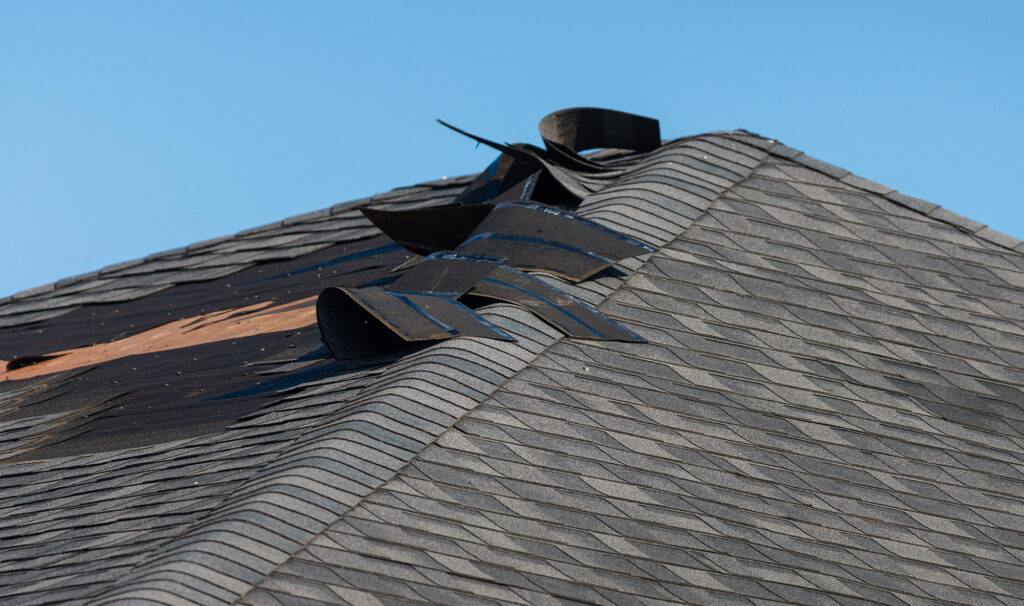
If your asphalt shingles are cracked, curled at the edges, or visibly missing, that’s a clear sign of ageing.
Over time, exposure to sun, wind, and rain wears them down. When shingles lose their protective granules or start to deform, your roof’s waterproof barrier is compromised, and leaks are likely next.
What to look for:
- Curling at the edges or corners
- Bald spots where granules have worn off
Shingles falling into your gutters or yard.
2. Leaks or Water Stains Indoors
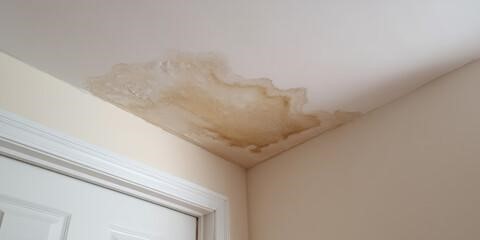
Seeing water spots on ceilings or walls after rain? That’s a warning sign that your roof may be failing.
Even if the leak seems small or only appears during storms, it can indicate a bigger issue like deteriorated flashing, compromised valleys, or underlayment failure.
Don’t wait on this one; water damage can lead to mould, wood rot, and even structural damage.
You Know What?
A small roof leak can cause over $10,000 in interior water damage if left unchecked.
3. Sagging Roof Deck
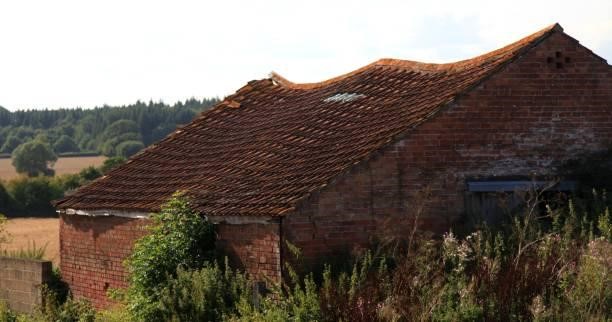
A sagging or uneven roofline usually means moisture has seeped into the underlying structure, often from chronic leaks.
This can weaken the decking or rafters and create safety concerns. A drooping roof is always a red flag that calls for immediate inspection.
4. Moss, Algae, or Mould Growth
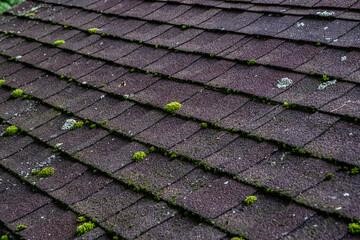
If your roof has developed moss or dark streaks of algae, it’s likely retaining moisture.
This is especially common in shaded areas or humid climates like the Pacific Northwest or the Southeast U.S.
Over time, trapped moisture can degrade shingles and shorten your roof’s lifespan.
Regular cleaning can help, but excessive growth may signal a deeper problem with ventilation or drainage.
5. Damaged Flashing or Roof Valleys
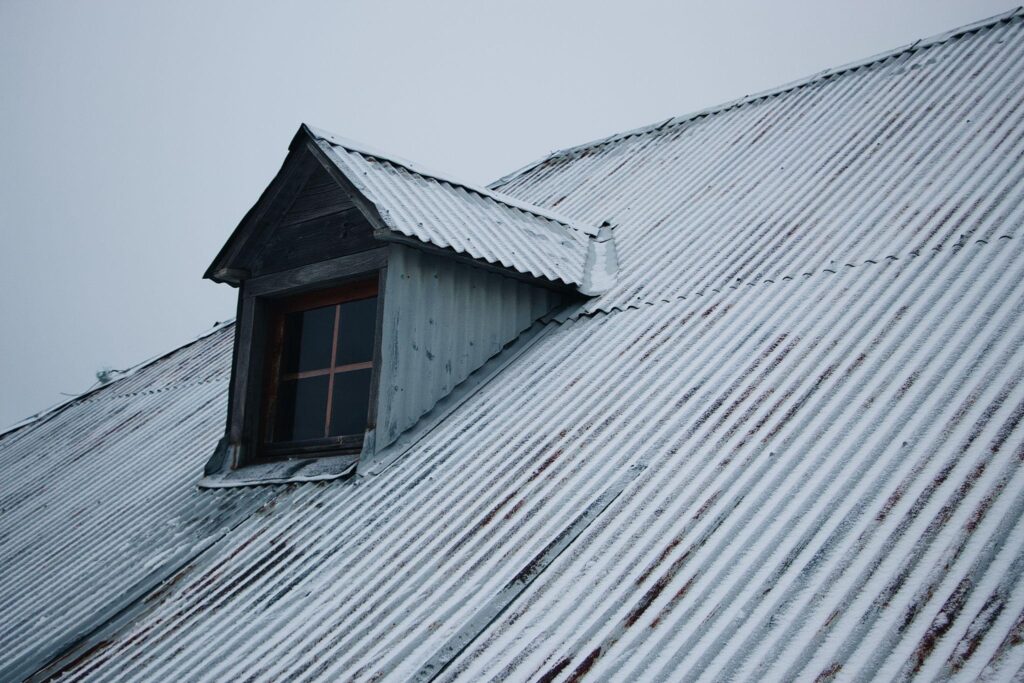
The metal pieces around chimneys, vents, skylights, and roof valleys are designed to direct water away.
When these areas rust, crack, or lift, water can seep underneath and damage your roof deck. Check for signs of corrosion or movement in these critical zones.
6. Your Roof Is Past Its Expected Lifespan
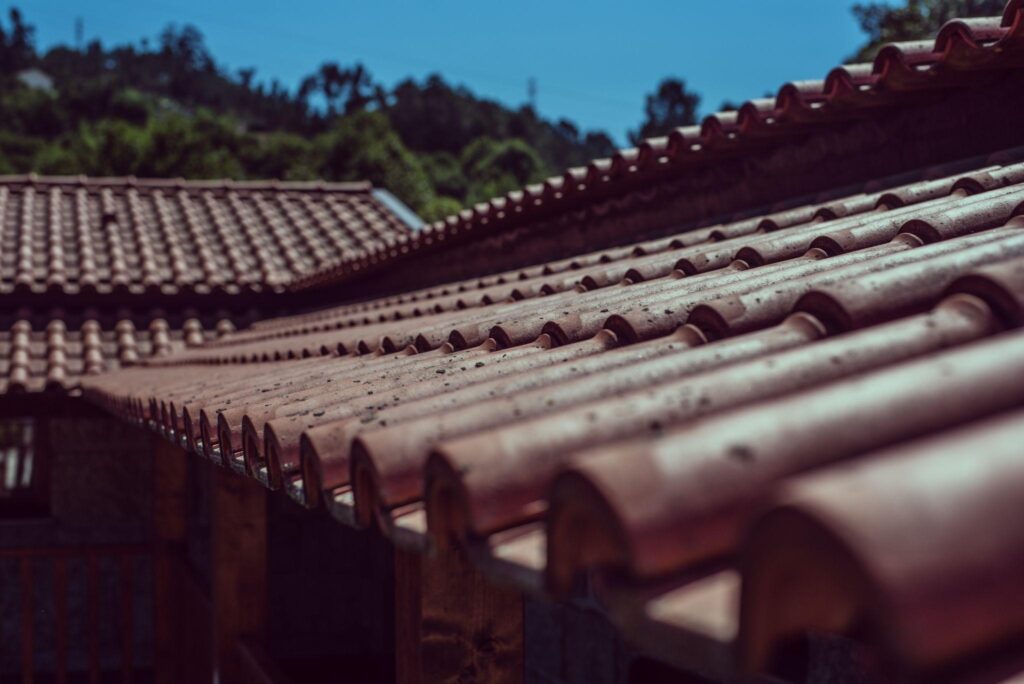
Even if everything looks okay from the ground, a roof that’s 20+ years old could be one storm away from failure.
If you don’t know when your roof was installed or it’s approaching the end of its material lifespan (see our breakdown above), it’s smart to get it inspected by a professional.
7. Granules in the Gutters
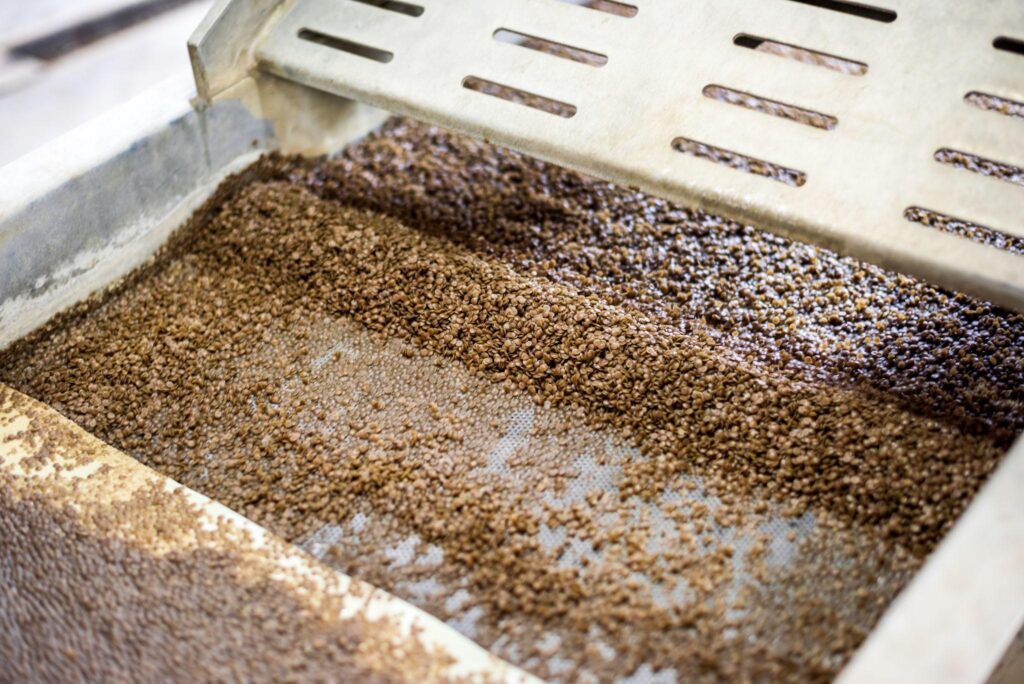
Finding lots of shingle granules in your downspouts or gutters? That’s a common sign that your asphalt shingles are deteriorating.
These granules protect the shingles from UV rays and water damage. Once they’re gone, your roof is much more vulnerable.
If you checked off more than one sign, it’s time to call a roofing professional for an inspection.
Early action prevents costly damage.
How Weather and Climate Affect Your Roof’s Lifespan
One thing we’ve learned from working with homeowners in San Francisco for years is this: where you live significantly impacts how long your roof will last.
For example, homes in San Francisco’s coastal neighbourhoods like Ocean Beach, Outer Richmond, and Sunset District face consistent coastal fog, high humidity, and moderate rainfall, which can lead to moisture buildup on roofing materials.
In contrast, homes in drier areas like Twin Peaks, Bernal Heights, and Glen Park experience more direct sunlight and stronger winds, which can cause other types of wear, such as sun damage and wind-driven rain.
We’ve seen how these unique weather patterns in San Francisco impact roof health, and we want to help you understand what these factors mean for your home.
Hot and Sunny Areas (San Francisco Bay Area)
- High UV Exposure: In areas like Mission District and Bernal Heights, asphalt shingles and wooden materials degrade faster due to intense sun exposure and UV rays, shortening their lifespan.
- Temperature Fluctuations: The day-to-night temperature shifts in the Bay Area cause metal roofs to expand and contract, which can lead to stress fractures and wear over time.
- Sun Damage: Direct sunlight accelerates the breakdown of roofing materials. Regular maintenance and inspections are essential for early damage detection.
Storm-Prone Areas (San Francisco Coastal Neighbourhoods)
- Coastal Fog & Rain: Neighbourhoods like Ocean Beach and Outer Richmond experience high humidity and coastal fog, which promote the growth of moss and mildew on roofing materials, leading to water damage.
- Strong Winds: Coastal areas are vulnerable to strong winds that can lift shingles and damage flashing. Regular roof checks and repairs are necessary to avoid leaks or further deterioration.
- Maintenance After Storms: After storms, it’s important to inspect your roof for wind damage, leaks, and clogged gutters, as these can contribute to long-term roof issues.
Rainy and Humid Areas (San Francisco Bay Area)
- Constant Moisture: San Francisco and surrounding areas face frequent rain and humidity, leading to water damage, moss buildup, and decay on roofing materials, particularly wood and shingles.
- Roof Wear from Moisture: Roofs exposed to continuous moisture wear out quickly, requiring regular maintenance and inspections to avoid major issues.
- Gutter Cleaning and Drainage: Regular gutter cleaning is crucial to prevent water backup. If gutters are blocked, rainwater can accumulate, leading to roof leaks and structural damage.
Not Sure What to Look For? Let Our Experts Inspect Your Roof Before It’s Too Late.
Most homeowners miss early warning signs. Our team can help you spot issues before they turn into costly replacements.
What Really Impacts Your Roof’s Lifespan?
Okay, let’s get real, there’s no one-size-fits-all answer to how long your roof will last. It’s not just about the number of years since it was installed. A lot depends on how it’s been treated, what it’s made of, and even what’s around it.
Let’s break it down:
You Know What?
Homebuyers often walk away if a roof looks old, even if it’s not leaking. A well-maintained roof boosts resale value.
Real Case Study: Waiting Too Long Cost This Homeowner Thousands
A homeowner ignored roof issues for over 3 years. By the time they called a contractor, water had seeped into the walls, insulation was ruined, and black mould had started to spread.
Initial cost of early roof work: $4,500
Final cost after delay: $11,000+ (plus cleanup, mould remediation, and temporary relocation)
Don’t wait like this. Even a small leak can lead to big damage.
What We Suggest to Homeowners: What You Should Do Right Now
As a roofing service agency with years of experience helping homeowners across the U.S., here’s what we’ve learned, and what we recommend you do right now to stay ahead of costly damage.
1. Don’t wait for a leak to take action.
Most major roofing issues start small. A single missing shingle or a hairline crack can lead to expensive water damage if ignored. Be proactive, not reactive.
2. Schedule a professional roof inspection every 2–3 years.
Even if everything looks okay from the ground, a trained eye can spot early warning signs before they turn into serious problems.
3. Take yearly photos of your roof.
This creates a visual timeline. You can easily track changes, spot new wear, and have proof if you need to file an insurance claim.
4. Always get more than one opinion.
Whether you’re considering repairs or a full replacement, talk to at least two reputable contractors. This helps you make a confident and cost-effective decision.
5. Start budgeting, even if your roof is in “good shape.”
Roof replacements aren’t cheap, and the last thing you want is to be caught off guard. A basic savings plan now can save you serious stress later.
Material Lifespan — Realistic, Not Just Marketing
Let’s break it down further. Roofing companies sometimes advertise maximum life spans, but real-life use is usually shorter, unless you keep up with maintenance.
How We Learned Roof Lifespan Isn’t Just About Years
Before we started helping homeowners with roof replacements, we assumed it was straightforward, that every roof had a set number of years before it needed replacing.
But through experience, research, and countless conversations with roofing professionals, we quickly learned it’s not that simple.
Many small but critical factors determine how long a roof truly lasts, and they vary from home to home.
Here’s what I didn’t know (but wish I did):
1. It’s Not Just the Material, It’s the Installation
Your roof might be made of 30-year shingles, but if it wasn’t installed correctly, you could be replacing it in half the time.
A poor install means water can sneak in through valleys, flashing, and nail holes. Always ask your roofer how experienced their crew is.
2. Ventilation Matters A Lot
When your attic can’t breathe properly, heat builds up underneath the roof. That means the shingles get “cooked” from the inside out.
Bad attic ventilation = shorter roof life + higher energy bills + mould.
After I learned this, I immediately got a roofing vent system installed, and I could feel the difference.
3. Where Your Roof Faces Plays a Role
The side of your roof that faces the sun will wear out faster, especially if it’s south- or west-facing. Roofs exposed to sunlight for most of the day tend to age more quickly.
Many people ask, “Why did my neighbour’s roof last 25 years and mine only 15?”
The truth?
Climate is a silent roof killer.
Even with the same materials, roofing lifespans vary wildly across the U.S.
The Mini Roof Maintenance Checklist That Saved Us (And Can Save You Too)
After helping countless homeowners replace their roofs, we created a simple seasonal checklist that we now recommend to every homeowner.
It only takes about 15–20 minutes each spring and fall, and it can easily add 5+ years to the life of your roof.
Here’s what we suggest:
Check inside the attic: Look for any signs of water stains, wet decking, or sunlight peeking through.
Clean your gutters and downspouts: Clogged drainage leads to water backup and roof damage.
Remove branches, leaves, or debris: These trap moisture and promote rot or moss growth.
Trim back any overhanging tree limbs: Prevent scratches, broken shingles, and pest access.
Look for missing, curling, or cracked shingles: These are often the first signs of trouble.
Inspect roof valleys and flashing: Pay attention to rust, cracks, or separation that can cause leaks.
If you have a metal roof, check screws, re-tighten where needed, and reseal visible seams.
Doing this just twice a year can make a big difference. You’ll catch small issues early, before they turn into costly repairs or full replacements.
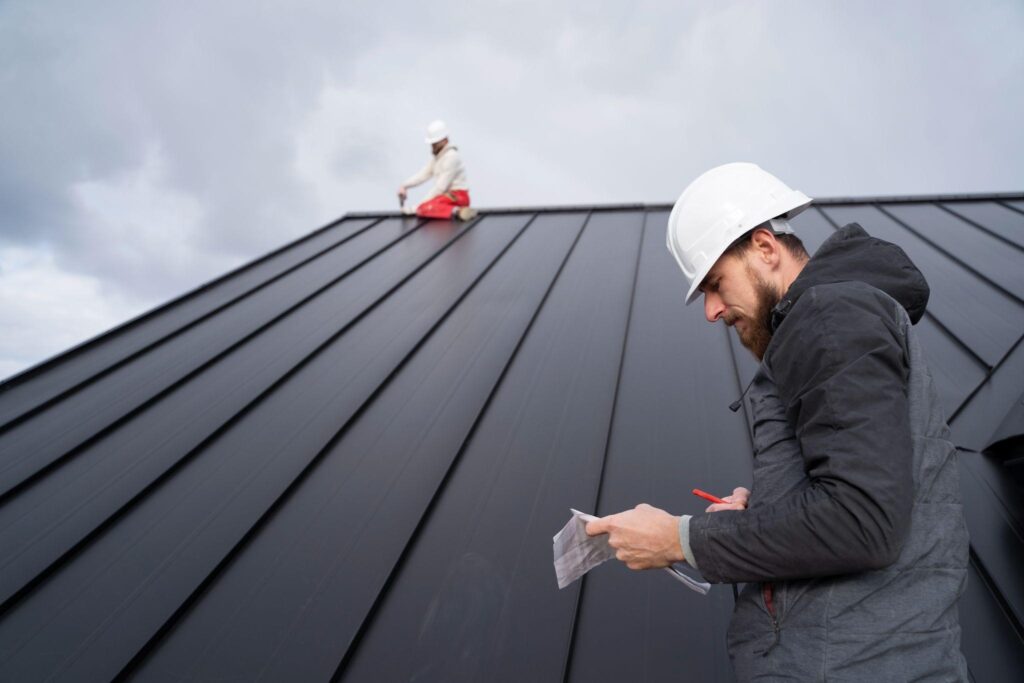
Final Thoughts: Don’t Wait for a Leak to Learn the Hard Way
If you’ve made it this far, I want to thank you for sticking with me. I didn’t write this blog just to share facts; I wrote it to help someone like you avoid the stress I went through.
Whether your roof is 5 years old or 25, knowing what to look for and when to act can save you thousands of dirhams (or dollars), a whole lot of frustration, and even protect your health and safety.
It’s not about rushing into a replacement; it’s about staying informed, doing regular checks, and not ignoring the little warning signs that sneak up on us.
You don’t have to be a roofing expert to make smart choices. You just need to be proactive.
So take 10 minutes today. Step outside. Look up at your roof. If something feels off, get it checked. Call a professional. Or two. Ask questions. Be prepared.
Because your roof isn’t just the top of your house,
It’s the first layer of protection for your home, your family, and your peace of mind.
Still Not Sure If Your Roof Will Last Another Year? Let’s Take the Guesswork Out.
Waiting could cost you thousands. A quick inspection today can save your ceiling & your savings.
FAQs (FrequentlyAsked questions)
How do I know if I need to replace my roof or just repair it?
If the damage is local (just a few shingles or one leak), repair might be enough. But if the roof is over 20 years old and showing multiple issues, replacement is likely smarter long term.
Can I replace my roof in winter or the rainy season?
Yes, but it’s riskier and more expensive. Dry, moderate weather is best.
How long does it take to replace a roof?
Usually 1–3 days, depending on size and weather.
How much does roof replacement cost?
Anywhere from $5,000 to $15,000, depending on material and house size. Always ask for a detailed quote.
Can I inspect my roof myself?
You can check from the ground for visible damage, but a full inspection should be done by a licensed roofer. Some offer free checks.
At what age is a roof considered old?
A roof is generally considered old after 15–20 years, depending on the material. Asphalt shingles, the most common type, often show signs of aging by year 20.
Should I stay home during roof replacement?
You can stay home, but it may be noisy and disruptive. If you work from home or have pets, consider being away during peak work hours.
Should I replace my roof if it’s not leaking?
Yes, leaks aren’t the only sign of roof failure. Curling shingles, sagging, or granule loss may indicate it’s time for a replacement before leaks start.
Is it worth it to replace your roof?
Absolutely. A new roof protects your home, boosts energy efficiency, and increases resale value. It also saves you from costly water damage repairs.
How much does a new roof cost for 1,000 sq ft?
In the U.S., a 1,000 sq ft roof can cost between $4,000 and $7,000, depending on materials, labour, and location. Premium materials may raise the price.
Is it true that you should replace your roof every 15 years or so?
Not always. While some roofs need replacement after 15–20 years, others, like metal or tile, can last 40–100 years with proper care. Material matters!

